This photograph shows the build-up of cumulus clouds.
Click on image for full size
Courtesy of Steve Albers
Types of Thunderstorms
There are two main types of thunderstorms: ordinary and severe. Ordinary
thunderstorms are the common summer storm. They are usually multicell.
Multicell storms consist of a line of thunderstorms in different stages
of development.
Ordinary thunderstorms last about one hour. The precipitation associated
with them is rain and
occasionally small hail.
An ordinary thunderstorm cloud
can have a vertical extent up to 12 kilometers.
Severe thunderstorms are the most dangerous weather
phenomenon in the United States. They are capable of producing baseball-sized
hail, strong winds, intense rain, flash floods, and
tornadoes. Severe thunderstorms
can last several hours and can reach a vertical extent of 18 kilometers.
Several phenomena are associated with severe thunderstorms. These
include the gust
front, microburst, supercell
thunderstorm,
and the squall
line.
You might also be interested in:

How did life evolve on Earth? The answer to this question can help us understand our past and prepare for our future. Although evolution provides credible and reliable answers, polls show that many people turn away from science, seeking other explanations with which they are more comfortable.
...more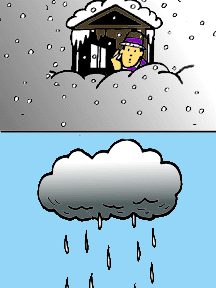
Precipitation is any form of water that falls to the Earth's surface. Different forms of precipitation include drizzle, rain, hail, snow, sleet, and freezing rain. Precipitation is important because it
...more
Tornadoes form from severe thunderstorms. They have a very high energy density which means that they are very destructive to a small area. They also don't last very long which makes them hard to study.
...more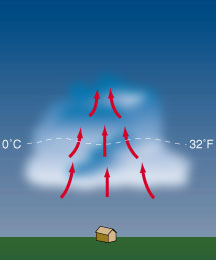
The sun heats the earth's surface during the day. The heat accumulates on the surface and warms the air around it. Since warm air is lighter than cool air, it starts to rise (known as an updraft). If
...more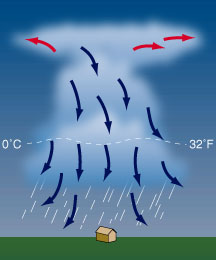
After about 30 minutes, the thunderstorm begins to dissipate. This occurs when the downdrafts in the cloud begins to dominate over the updraft. Since warm moist air can no longer rise, cloud droplets
...more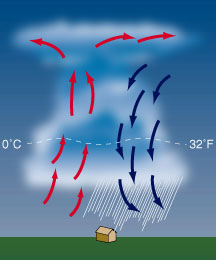
When the cumulus cloud becomes very large, the water molecules in it become large and heavy. They start to fall through the cloud when the rising air can no longer hold them up. Meanwhile, cool dry air
...more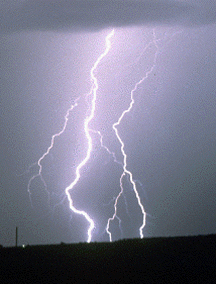
You see a flash of lightning across the night sky. Five seconds later, your hear the rumble of thunder. If lightning and thunder come from the same source, then why don't they occur at the same time?
...more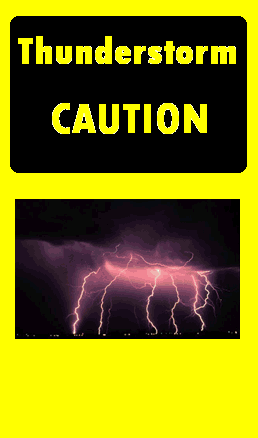
Thunderstorms can be really dangerous! Flash floods, lightning bolts, hail, tornadoes...all of these things can hurt you if you're not careful. So here's some safety tips. GO INSIDE! If you hear distant
...more















